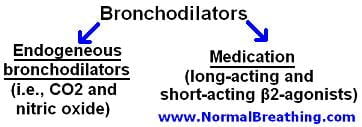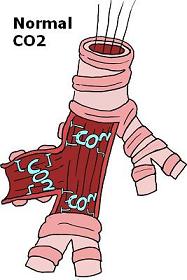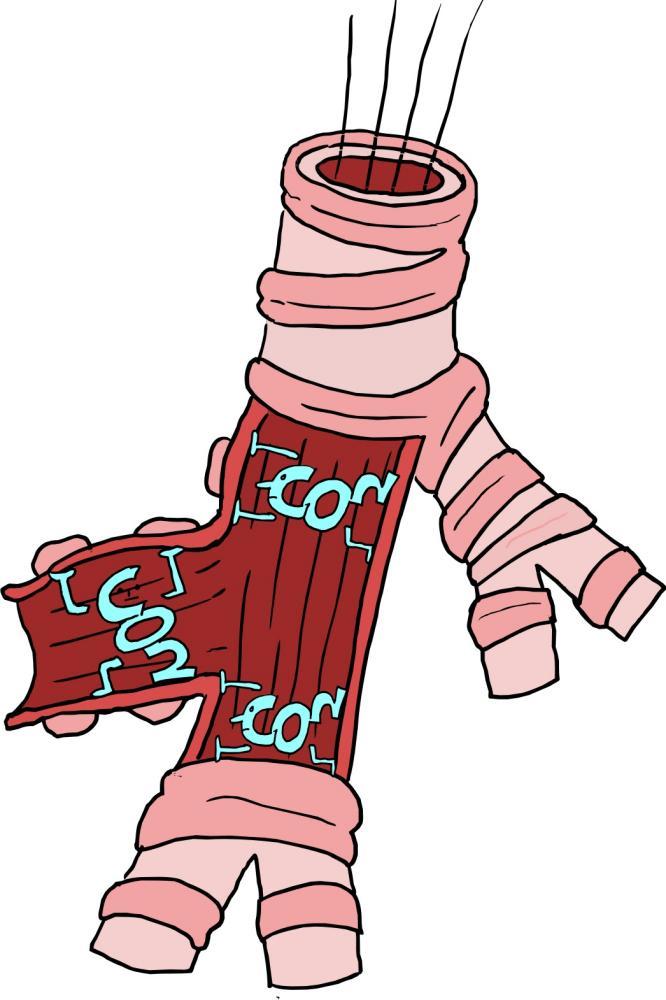- Updated on August 3, 2019
![]() By Dr. Artour Rakhimov, Alternative Health Educator and Author
By Dr. Artour Rakhimov, Alternative Health Educator and Author
 A bronchodilator is a chemical that is a relaxant of smooth muscles in airways. It causes natural dilation of bronchi and bronchioles while improving air flow to alveoli and preventing bronchospasm. Bronchodilators are divided in endogenous bronchodilators (produced in the human body, like CO2 and nitric oxide), and medical drugs.
A bronchodilator is a chemical that is a relaxant of smooth muscles in airways. It causes natural dilation of bronchi and bronchioles while improving air flow to alveoli and preventing bronchospasm. Bronchodilators are divided in endogenous bronchodilators (produced in the human body, like CO2 and nitric oxide), and medical drugs.
Chemical bronchodilators have side effects. They are highly toxic and include potent poisonous substances such as albuterol, bitolterol, ephedrine, isoetharine, isoproterenol, pirbuterol, racepinephrine, ritodrine, terbutaline and many others. For more details related to their toxicity, you can visit www.nih.gov (National Institute of Health in the USA): side effects of bronchodilators.
These chemicals are used for a treatment of asthma, COPD, bronchitis, cystic fibrosis and other respiratory conditions. However, these bronchodilators are generally unnecessary since most cases of acute bronchospasms, such as asthma attacks or exacerbations due to bronchitis, can be prevented using a simple natural remedy that addresses the cause of bronchospasm. The cause of bronchospasm can be found after analyzing this Table.
Ventilation rates (chronic diseases)
| Condition | Minute ventilation |
Number of people |
All references or click below for abstracts |
| Normal breathing | 6 L/min | – | Medical textbooks |
| Healthy Subjects | 6-7 L/min | >400 | Results of 14 studies |
| Asthma | 13 (+-2) L/min | 16 | Chalupa et al, 2004 |
| Asthma | 15 L/min | 8 | Johnson et al, 1995 |
| Asthma | 14 (+-6) L/min | 39 | Bowler et al, 1998 |
| Asthma | 13 (+-4) L/min | 17 | Kassabian et al, 1982 |
| Asthma | 12 L/min | 101 | McFadden, Lyons, 1968 |
| COPD | 14 (+-2) L/min | 12 | Palange et al, 2001 |
| COPD | 12 (+-2) L/min | 10 | Sinderby et al, 2001 |
| COPD | 14 L/min | 3 | Stulbarg et al, 2001 |
| Cystic fibrosis | 15 L/min | 15 | Fauroux et al, 2006 |
| Cystic fibrosis | 10 L/min | 11 | Browning et al, 1990 |
| Cystic fibrosis* | 10 L/min | 10 | Ward et al, 1999 |
| CF and diabetes* | 10 L/min | 7 | Ward et al, 1999 |
| Cystic fibrosis | 16 L/min | 7 | Dodd et al, 2006 |
| Cystic fibrosis | 18 L/min | 9 | McKone et al, 2005 |
| Cystic fibrosis* | 13 (+-2) L/min | 10 | Bell et al, 1996 |
| Cystic fibrosis | 11-14 L/min | 6 | Tepper et al, 1983 |
Most Potent Bronchodilator


Since people with these health problems breathe about 2 times more than the norm they have reduced levels of CO2 in airways and alveoli. CO2 is a very potent bronchodilator. It is possibly the most potent bronchodilator since CO2 is the most potent relaxant of smooth muscles of arteries or strongest known vasodilator. CO2 deficiency causes spasm of smooth muscles in airways and increased resistance and work of breathing. CO2 deficiency also promotes injury to lungs (see links to medical studies below) and tissue hypoxia (deficiency of oxygen in body cells) leading to immunosuppression, an appearance of allergic reactions, and the inability of the organism to eliminate chronic inflammation (also a proven medical fact).
Therefore, chemical bronchodilators can save lives of critically ill people, but there is no need to use them day after day. All 3 components of bronchospasm (spasm of smooth muscles, chronic inflammation and extra mucus due to irritation or allergic response) relate to hyperventilation or low CO2 levels in airways.
Hence, an educated way to deal with bronchospasm is to increase CO2 levels in airways. Normal alveolar CO2 eliminates spasm of airways and improves oxygen delivery to body cells. One can apply easy breathing exercises for acute exacerbations that are freely provided on this site, instead of using chemical bronchodilators.
The video on the right side (“Hyperventilation and Natural Bronchodilators“) features Dr. Artour Rakhimov, who explains the key cause of bronchospasm.

